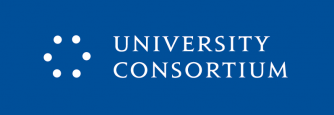US-Russian Arms Control in the Middle East: Defining the Diplomatic Playing Field
Hanna Notte
In the rich history of US-Russian (and before that, US-Soviet) cooperation on WMD arms control and non-proliferation, the Middle East has long occupied a central place. At the 1995 NPT Review and Extension Conference, Arab states were given assurances, through a resolution sponsored by Russia, the US and the UK, that NPT states parties would pursue the goal of establishing a WMD-Free Zone in the Middle East. From the mid-2000s, Russia and the US worked within the “P5+1” framework on resolving the Iranian nuclear dispute. While such cooperation was never without friction, it culminated in the 2015 Joint Comprehensive Plan of Action (JCPOA). Finally, US-Russian cooperation in destroying Syria’s declared chemical weapons (CW) in 2013-2014 was hailed as a notable arms control achievement at a time of growing bilateral friction.
More recently, however, widespread worries about a bilateral US-Russian arms control agenda in disarray – given the fate of the INF and Open Skies Treaties, and the unresolved future of New START – have been compounded by serious setbacks to cooperative arms control in the Middle East. The Trump administration walked away from the JCPOA in May 2018, launching a “maximum pressure” campaign against the Islamic Republic. Equally unnerving, US-Russian cooperation on Syria’s CW has dissolved into outright confrontation over efforts at pursuing attribution and accountability for CW use. A closer look at these two examples suggests that US-Russian diplomacy on Middle East arms control is characterised by three tensions: that between coercion and consent, that over legal interpretations of agreements reached, and that between arms control and extraneous motivations. In the end, it all boils down to priorities of interest.
Syria’s chemical weapons: From cooperation to confrontation
Starting with the disarmament of Syria’s CW, US-Russian cooperation in 2013-14 was enabled by a variety of factors, including the resonance of previous bilateral exchanges on the Syrian stockpile and modest expectations of positive “spillover” into the US–Russian relationship. That said, the perception of a coercive threat to Syria at the time (remember President Obama’s “red line” threat) was critical: Russia viewed cooperation as a means to avert possible Western military action against Syria, following the August 2013 chemical attack in East Ghouta.
It was also crucial that the US and Russia were able to agree on a hybrid legal framework underpinning CW disarmament, which entailed both an Executive Council decision by the Organisation for the Prohibition of Chemical Weapons (OPCW) and UN Security Council (UNSC) Resolution 2118. Under ordinary circumstances, CW disarmament takes place within the purview of the 1997 Chemical Weapons Convention (CWC), which mandates that an acceding state provide a comprehensive declaration of all CW and production facilities. Those are verified through OPCW-led on-site inspections, before the OPCW and the state jointly implement a plan for CW destruction. In the Syrian case, Western countries pushed for important exceptions to this routine, including the passing of a UNSC resolution and an extremely tight destruction schedule. In its subsequent reading of the hybrid framework, Russia repeatedly emphasized the regular, consent-based CWC component, and hence the voluntary and sovereign nature of Syria’s engagement in disarmament. This resulted in a dilemma for Washington, since condoning a modicum of engagement with the Syrian government contradicted the principled US position that President Assad had lost all legitimacy to lead his country.
As allegations of CW use in Syria resumed from 2014, US-Russian disagreement over the pursuit of attribution and accountability played out over various efforts, including the Fact-Finding Mission (FFM), the Joint Investigative Mechanism (JIM) and most recently the OPCW’s Investigation and Identification Team (IIT). Western states have since lamented continued CW use by the Syrian government – unrestrained by Russia and undeterred both by Obama’s original “red line” and the Trump administration’s punitive airstrikes in April 2017 and April 2018. Russian officials, meanwhile, have questioned the objectivity and even legality of the OPCW’s recent engagement with the Syrian CW file, accusing Western countries of instrumentalising the hybrid legal framework to single out Syria for special “mistreatment”, rather than implementing international law objectively. This contestation is currently epitomised in the quarrel over the IIT’s first report, published in April, which attributes culpability for CW use in March 2017 to the Syrian Arab Air Force.
Please find the full article at the Valdai Club website



